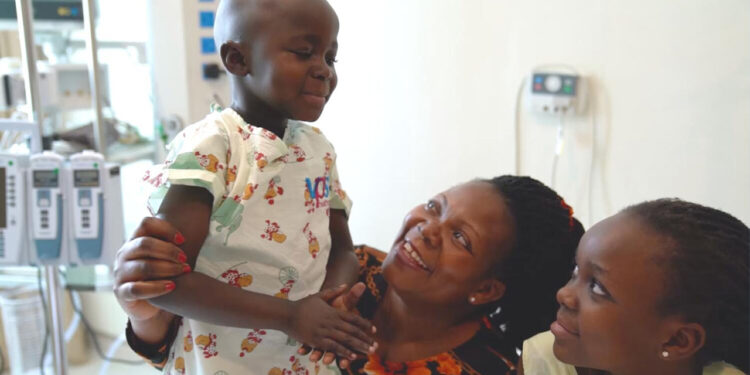A “Bone Marrow Baby” refers to a child who has undergone a bone marrow transplant, often as part of life-saving treatment for conditions like leukemia or immune disorders. This process helps the baby recover by replacing damaged bone marrow with healthy cells from a donor. Let’s explore this vital procedure.
How Does Bone Marrow Work?
Bone marrow is a spongy tissue found inside bones, particularly in the hip, ribs, and spine. It is essential for producing blood cells, including red blood cells, white blood cells, and platelets. These cells are vital for carrying oxygen, fighting infections, and clotting blood. Without healthy bone marrow, the body can’t function properly, leading to life-threatening conditions.
For babies born with bone marrow deficiencies, these issues can be especially dangerous because their immune systems are not fully developed. Bone marrow transplants offer a way to restore this crucial function, giving these babies a chance to grow and thrive.
What Is a Bone Marrow Transplant?
A bone marrow transplant is a medical procedure that replaces damaged or diseased bone marrow with healthy stem cells, often sourced from a donor. The process typically involves chemotherapy or radiation to eliminate the unhealthy bone marrow, followed by an infusion of healthy stem cells. These new cells then travel to the bones and start producing new, healthy blood cells.
For infants and young children, bone marrow transplants are often used to treat severe blood disorders, cancers, or immune deficiencies. The earlier the transplant is performed, the better the chances of a successful outcome. Babies who undergo this procedure are commonly referred to as “bone marrow babies.”
Why Are Bone Marrow Babies Important?
Bone marrow babies represent the incredible advances in modern medicine that allow us to save lives at the earliest stages. These infants typically suffer from severe conditions like leukemia, sickle cell anemia, or inherited immune system disorders. Without a bone marrow transplant, their chances of survival would be significantly reduced.
The importance of bone marrow babies also highlights the need for bone marrow donors. Thousands of children worldwide need transplants every year, and finding a match is crucial for saving these young lives. Additionally, bone marrow research continues to advance, offering new hope for treating various conditions.
Who Can Be a Bone Marrow Donor?
Bone marrow donors can be people aged 18 to 44 in good health. While siblings are often the first choice for matches, unrelated donors can also be a good fit. Donors must undergo a series of tests to ensure compatibility, such as tissue typing. The closer the tissue matches, the better the chances of the transplant succeeding.
How Is Bone Marrow Collected?
There are two main ways to collect bone marrow: through a surgical procedure called a bone marrow harvest or via peripheral blood stem cell collection (PBSC). In a bone marrow harvest, the donor is put under anesthesia, and marrow is extracted from the hip bone. PBSC, on the other hand, is a less invasive method where stem cells are collected from the bloodstream after the donor takes medication to increase the number of stem cells in their blood.
What Happens After the Transplant?
After the transplant, the healthy stem cells begin to settle in the recipient’s bone marrow, where they produce new, healthy blood cells. This process can take several weeks, and the child will need to stay in the hospital during this time to ensure no complications arise. The success of the transplant is monitored through regular blood tests and medical evaluations.
What Conditions Can Be Treated?
Bone marrow transplants can treat a wide range of conditions, especially those related to blood and immune disorders. Some of the most common conditions include:
- Leukemia: A type of cancer that affects blood cells.
- Sickle Cell Anemia: A genetic condition that causes red blood cells to become misshapen and dysfunctional.
- Immune Deficiencies: Conditions where the immune system doesn’t work properly, leaving the body vulnerable to infections.
By replacing the diseased bone marrow with healthy cells, bone marrow transplants give babies a chance at a normal, healthy life. For many, it is the only cure.
How to Find a Donor Match
Finding a donor match is a critical step in the bone marrow transplant process. The best matches often come from family members, especially siblings, who have a similar genetic makeup. However, many patients rely on unrelated donors from bone marrow registries.
Donor registries work to find matches by comparing tissue types from millions of potential donors. While it’s challenging to find the perfect match, these registries provide hope for families in need.
The Recovery Process for a Bone Marrow Baby
Recovery after a bone marrow transplant can be a long and complex journey, especially for babies. Since their immune systems are fragile, they must stay in a sterile environment for several weeks to avoid infections. Medical teams closely monitor their progress to ensure the new bone marrow is functioning correctly.

How Long Does Recovery Take?
The recovery process can take several months, depending on how the baby responds to the transplant. The first few weeks after the procedure are critical as the body begins to accept and utilize the new stem cells. Most babies start to show improvements after about three months, but full recovery may take up to a year.
What Care Is Needed During Recovery?
Care during recovery is intensive. Babies often require regular blood tests, medications to prevent infections, and monitoring for potential complications. Special precautions are also taken to protect their delicate immune systems. Parents and caregivers must follow strict guidelines to reduce the risk of exposure to infections.
The Future of Bone Marrow Babies
As research into bone marrow transplants advances, the future for bone marrow babies looks increasingly positive. New techniques are making the transplant process safer and more effective. Scientists are also exploring gene therapies that may one day replace the need for transplants altogether, offering even more hope for children with life-threatening conditions.
How to Support Bone Marrow Research
Supporting bone marrow research is crucial for continuing advancements in this life-saving field. Donations to research organizations, participation in clinical trials, and spreading awareness about the importance of bone marrow donation can all help. Every step forward in this research brings us closer to new treatments and cures for children who need them.
Final Words
Bone marrow babies represent the hope and possibilities of modern medicine. While the journey for these children is often long and challenging, the advances in bone marrow transplantation provide them with a second chance at life. By understanding how bone marrow works, the importance of donor matches, and the recovery process, we can appreciate the incredible impact this procedure has on saving young lives. Supporting ongoing research will ensure that bone marrow babies continue to thrive, offering a brighter future for many families.









